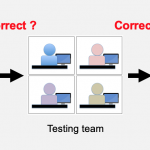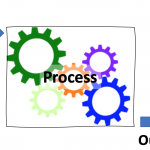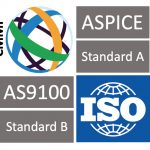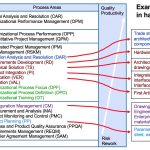Have you ever sent or received a file or software release that looked correct but in fact turned out to be the wrong stuff? This can happen when authors and developers hand off files to test or QA, or when QA hands off files to the customer. Somewhere along the line either the wrong files …continue reading >
Running Your Business Using a Consistent Process and Maintaining the Gains
Introduction When you purchase a product or service, you want it to work as expected. You don’t ask the vendor for a product made by Jane’s team, or tell them specifically you don’t want one where John’s team was involved! To further illustrate, when you buy a latte, get your shirts cleaned, or purchase a …continue reading >
Go on a Documentation Diet
Introduction Most documents, such as project plans, requirements, and designs, contain long narrative paragraphs that make them time-consuming to write, tedious to read, and hard to find essential information. Instead, consider banning paragraphs from your technical documents and use tables with single sentences. To illustrate the point, here are some narrative and non-narrative examples. Project …continue reading >
Complying with Standards Such as ISO9001, CMMI or AS9100
Introduction Many software, hardware, and systems development companies have customers that expect them to be certified or appraised to standards such as ISO9001, CMMI, Automotive Spice, PMBOK and AS9100. There are several common reactions to this request: Use the standard as an opportunity to improve performance. Identify the smallest possible application of the standard so …continue reading >
Ready to Ship? Analyzing Peer Review and Test Data
Introduction Your project has been going on for eight months, and each milestone has been met so far. Final test has not occurred yet, but you feel that the product will be ready. Quick Test Before each statement below, ask the question, “Am I on track to deliver by the final deadline?” Fact 1. The …continue reading >
10 Tested Leadership Practices
I have met some great leaders over the last thirty years. Here are 10 things I see them do: Set achievable deadlines with input from their staff. Anything else will destroy people’s motivation. Routinely communicate goals. People appreciate knowing the bigger picture of what they are working on. Ensure staff members are trained in the domain …continue reading >
Tools to Consider
Introduction Tools can help teams perform faster if they are set up correctly and contain good data. Here is a list of some tools that my clients are using. The list is by no means a complete list of all tools, but it might cause you to investigate tools that you have not heard of …continue reading >
Improving Capability and Performance With CMMI V2.0 — What Has Changed?
Introduction (Updated 11/4/19) In March 2018, a new version of the Capability Maturity Model Integration (CMMI) and appraisal method were released. This article summarizes the changes and upcoming milestones. The overall focus in V2.0 has been to drive home the point that the model is about improving organizational capability to improve performance for any type …continue reading >
Overcommitment and Negotiation — One Choice Only?
Introduction Overcommitment (promising more than one can do) is common in every industry. Overcommitment can be positive and cause people to stretch and grow. It can also lead to embarrassment, disaster and financial loss. Given that there is a range of outcomes, great project teams are very careful when making commitments. There are many reasons …continue reading >
Improving Hardware Engineering Practices Using CMMI
What is CMMI? CMMI is a collection of best practices used by software, hardware, IT development, and service organizations to improve their cost, schedule and quality results. It is organized into a roadmap that can be implemented incrementally over time. Useful links CMMI for Development Summary CMMI for Services Summary Changes from CMMI V1.3 to …continue reading >
- « Previous Page
- 1
- 2
- 3
- 4
- 5
- 6
- …
- 9
- Next Page »









 The Process Group helps you improve your organization's capability to routinely meet deadlines and delivery quality expectations. We are certified CMMI appraisers / trainers and Certified Scrum Masters.
The Process Group helps you improve your organization's capability to routinely meet deadlines and delivery quality expectations. We are certified CMMI appraisers / trainers and Certified Scrum Masters. 